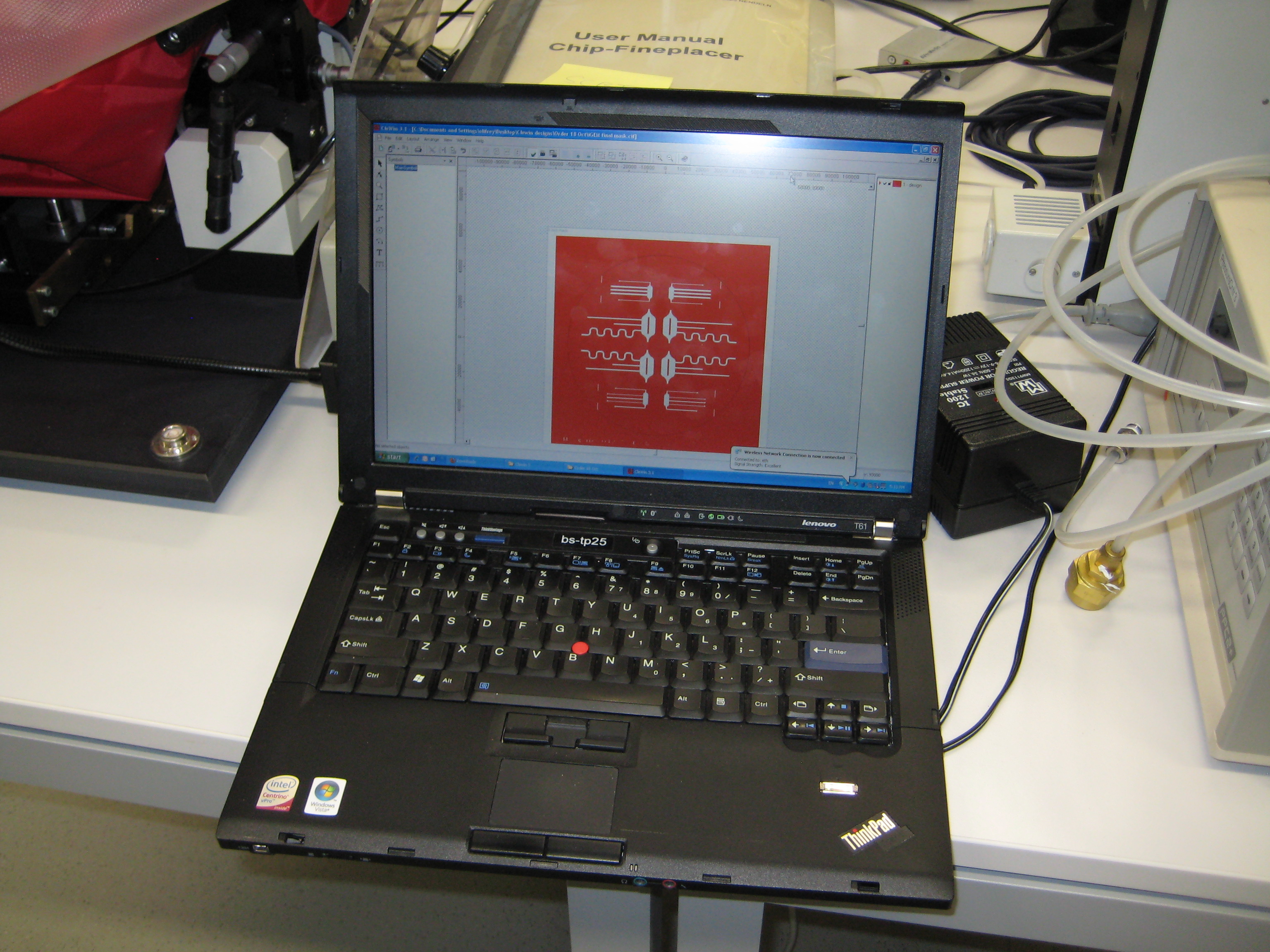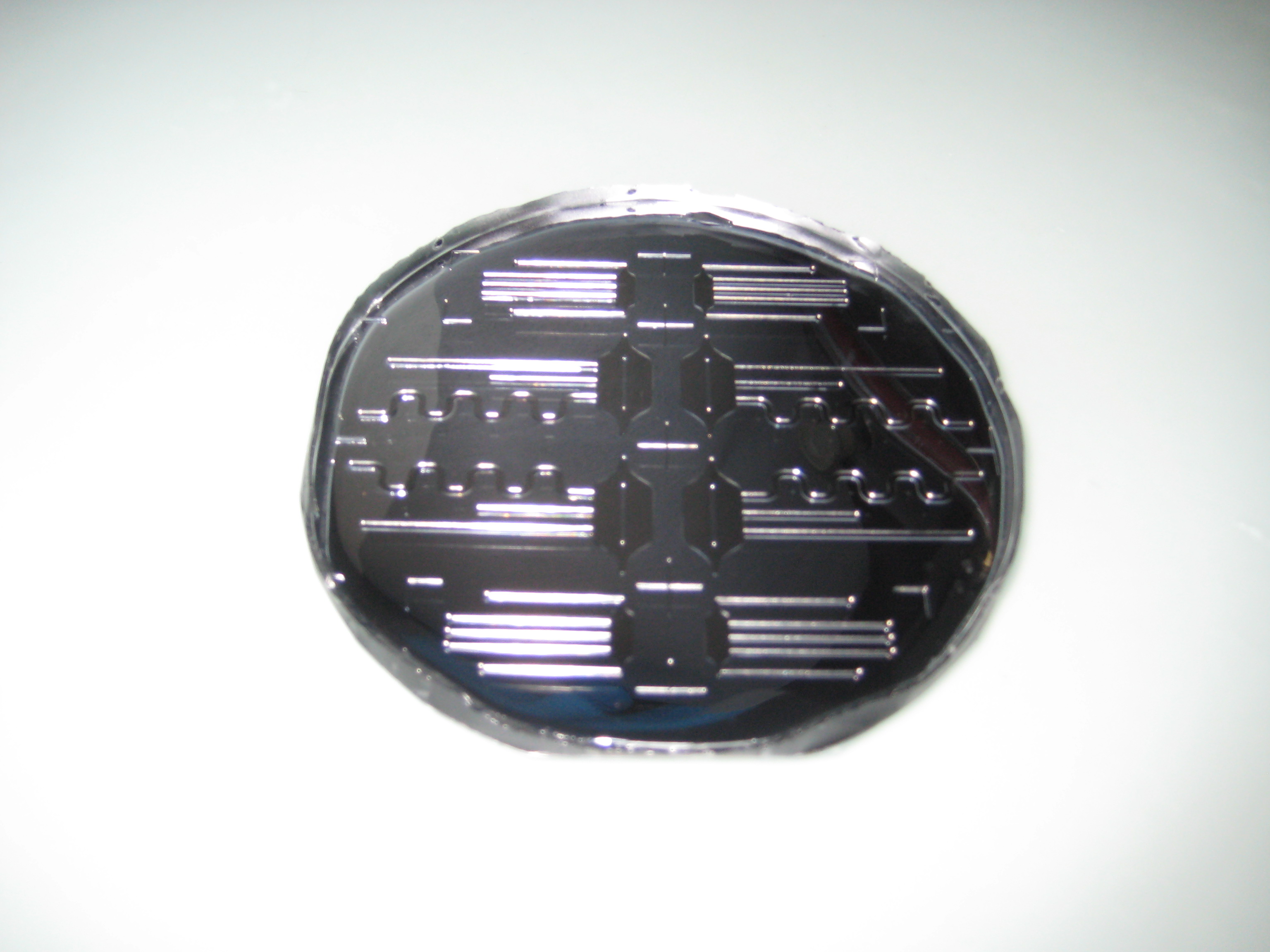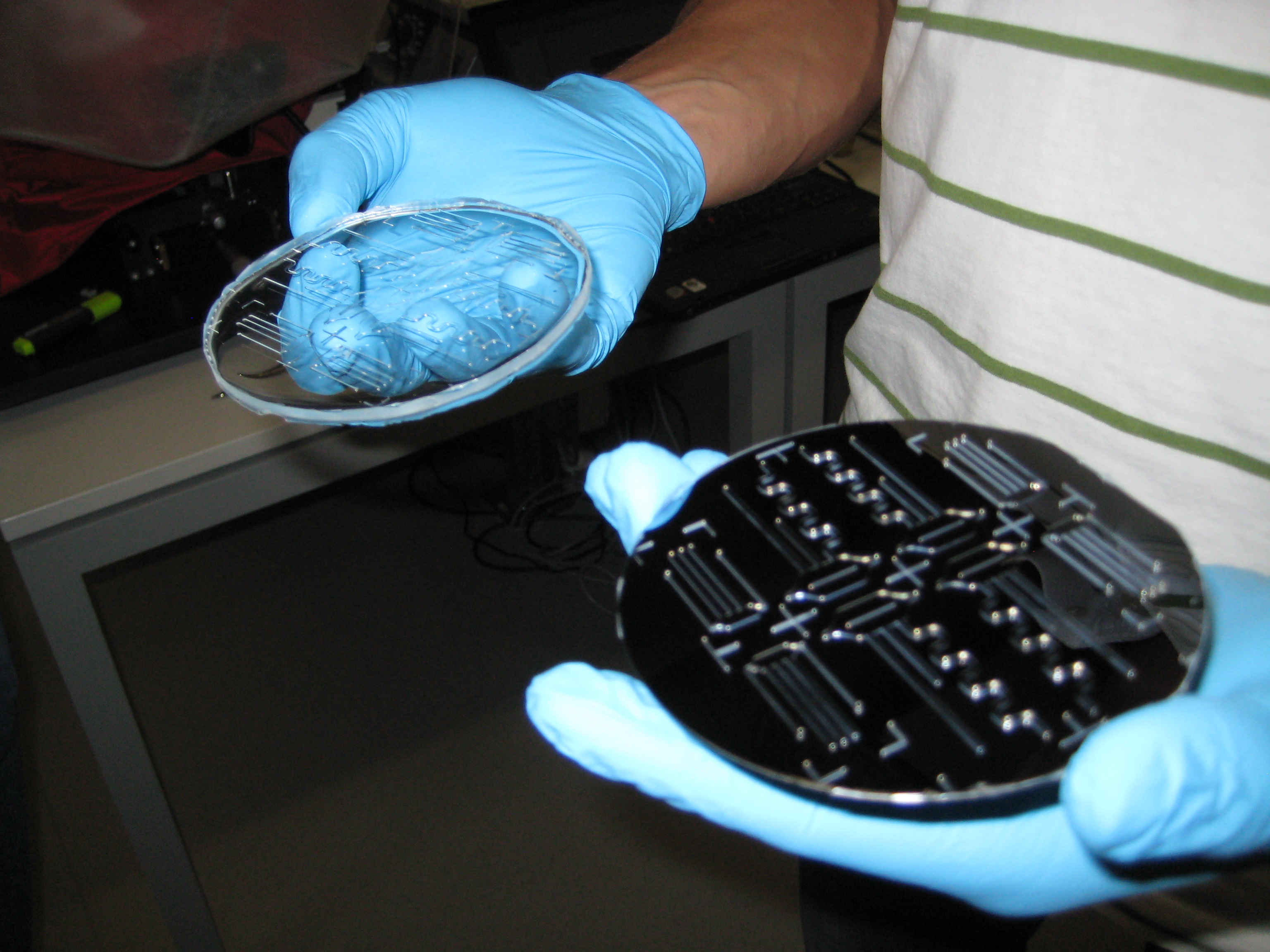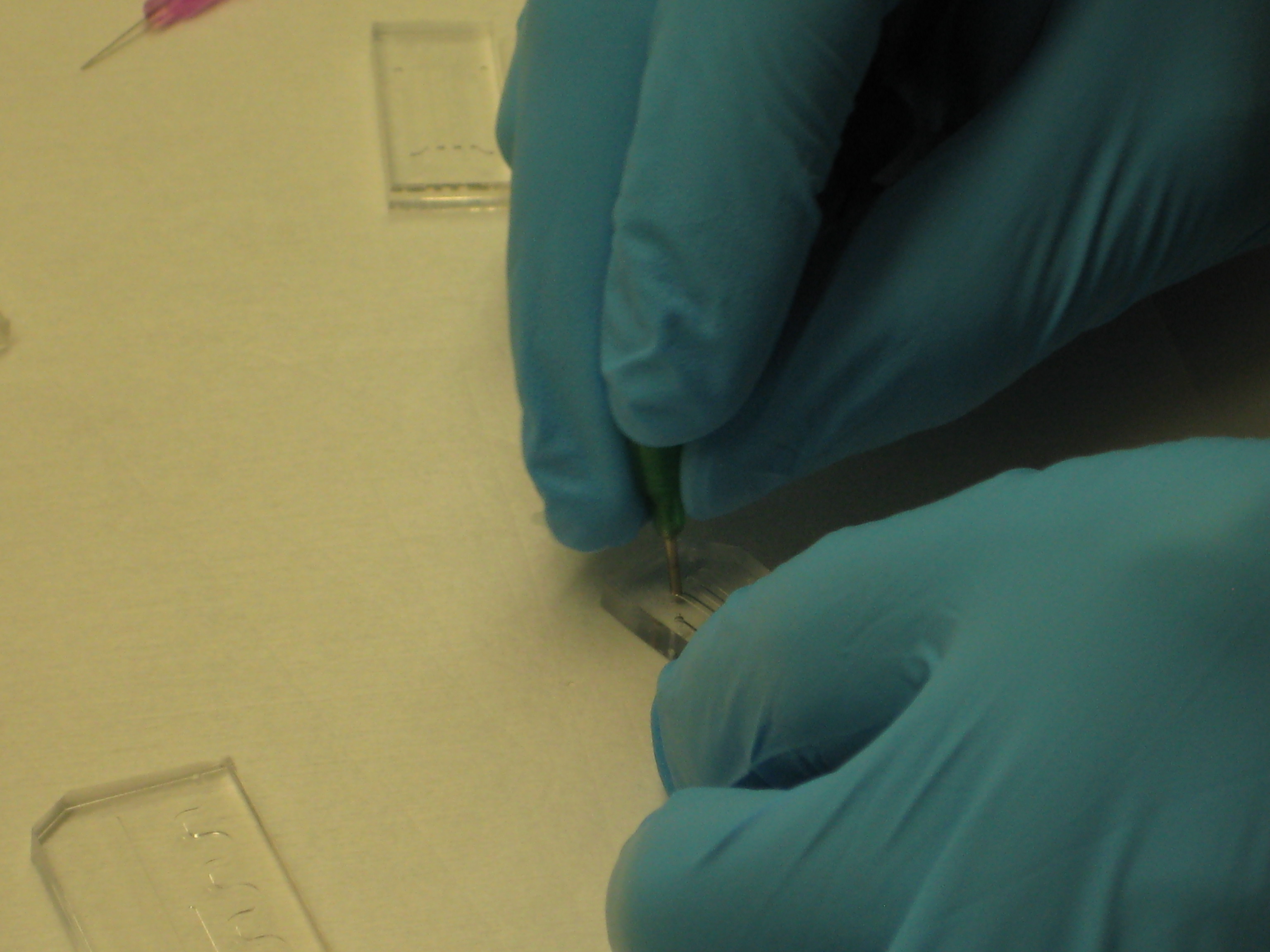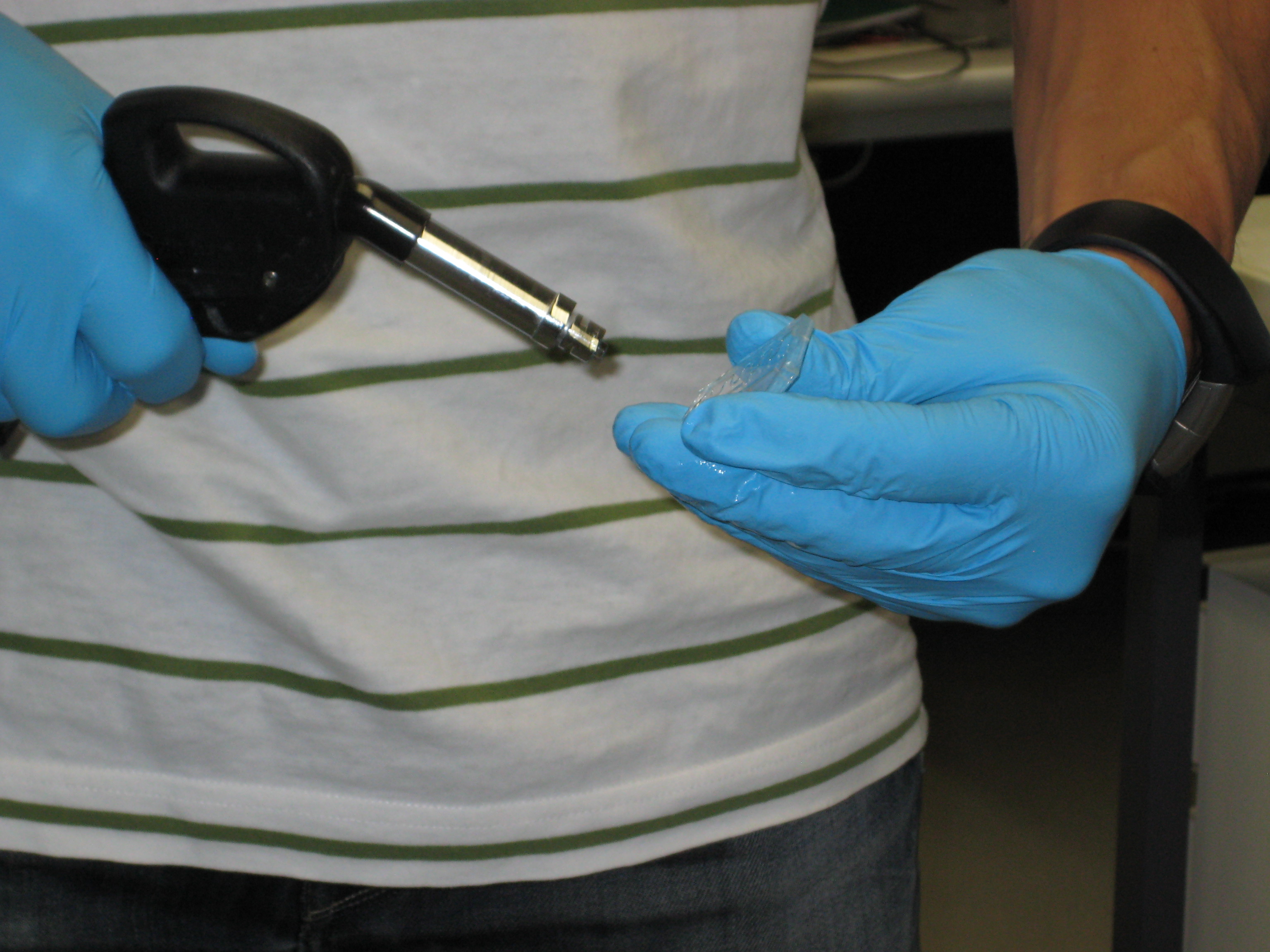Team:ETH Zurich/Process/Validation
From 2011.igem.org
(→Final Channel Design) |
(→Final Channel Design) |
||
| Line 8: | Line 8: | ||
== Final Channel Design== | == Final Channel Design== | ||
| - | + | [[File:ETHZ_Channels.png|400px|left|thumb|'''Figure 1: Final design of our microfluidic chips containing the channels. The three chips differ in shape and dimensions''' ]] | |
| + | On the left is the design of our final microfluidic devices, which we made out of polydimethylsiloxane (PDMS). The three chips differ between themselves in their shape and dimensions. All of the channels on the chips have a reservoir attached to one end. | ||
| + | |||
| + | |||
| + | '''Dimensions of the chips:''' | ||
| + | |||
| + | * The size of the first two chips is 15 x 33 mm, the size of the last one is 23 x 46 mm. | ||
| + | * The width of the channels is either 0.5 or 1 mm | ||
| + | * Channel length: | ||
| + | - Large chip: (from top to bottom) 30 mm, 15 mm and ca. 60 mm <br> | ||
| + | - Small chip: all 20mm | ||
Revision as of 19:25, 25 October 2011
Final Setup and Validation
This page presents description of our final channel design as well as description of its construction, which we did by ourselves. Our final channel is build out of polydimethylsiloxane (PDMS) and constructed with a technique called photolithography. We are also presenting the experiments we did to validate our setup and to show that it can work in practice.
Final Channel Design
On the left is the design of our final microfluidic devices, which we made out of polydimethylsiloxane (PDMS). The three chips differ between themselves in their shape and dimensions. All of the channels on the chips have a reservoir attached to one end.
Dimensions of the chips:
- The size of the first two chips is 15 x 33 mm, the size of the last one is 23 x 46 mm.
- The width of the channels is either 0.5 or 1 mm
- Channel length:
- Large chip: (from top to bottom) 30 mm, 15 mm and ca. 60 mm
- Small chip: all 20mm
Final Channel Construction
To construct these microfluidic channels, we used the technique photolithography. Photolithography is the photopatterning of channels from a mask (drawing of channels in 2D) and is based on the utilization of particular substances (photoresists) that become soluble to particular solvents after being exposed to UV light [1].
You can see below some photos of the channel building process:
References: [1] http://www.elveflow.com/microfluidic/16-start-with-microfluidics
Setup Validation
bla
We checked whether our designed works by putting an engineered cells that produce GFP upon arabinose induction in agarose and filling the channel with it. In the reservoir we put arabinose in ____________ ?? After _____?? we optained a nice arabinose-inducible GFP gradient.
 "
"



